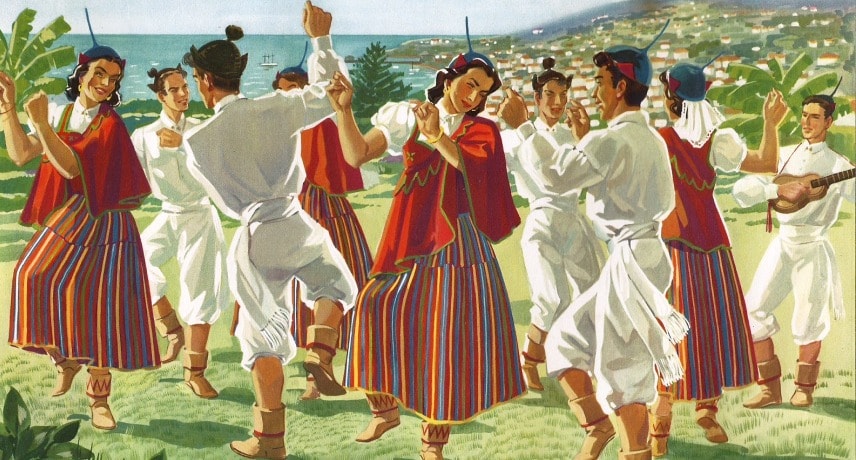
The Madeira Archipelago is rich in cultural traditions, resulting from experience and the uses and customs of Madeiran people.
There are many religious nature traditions, strongly rooted in the Madeira culture, but also traditions linked to crafts, music, and even the evolution of the island’s economy.
One of the religious experiences featuring Madeiran people, especially the rural areas, it’s Christmas. The people live this time with great fervor and fifteen days before Christmas starts the party with the delivery masses. The labor masses celebrate the nine months of pregnancy of the Virgin Mary and are a uniquely Madeiran tradition. In Masses are used Madeiran typical instruments like Rajão, the castanets, the bass drum.
The Madeiran nativity scenes, best known for “lapinhas” are usually present in all homes and churches. There are two types of cribs, the “ladder” and the “Rochinha”.
The Midnight Mass is a Mass to be held at midnight from 24 to 25 December and is celebrated after the Christmas Eve dinner.
The festivities of Christmas extend to the new year with the “singing of kings” and “sweeping the closets.”
In great excitement and entertainment, on the eve of the day of kings, they take to the streets groups of people, which from house to house singing songs alluding to the court.
At Easter, people receive in their homes to the Pascal visit, best known as the Holy Spirit visit. It is a religious celebration that brings together families again. The visit is made by a group composed of a priest, by those in charge, usually three people with red capes (one that takes the silver to collect the offers and the other two insignia), the “saloias” (dressed mostly in red or the typical Madeiran costume) who sing during visits and a child who carries the holy water.
The month of June is synonymous with celebration in honor of the three popular saints, all over the Madeira Island. The Celebrations in honor of St. Anthony are centered in the town of the same name, in Funchal. The night of 12 to 13 June is marked by the parade of popular marches.
On June 24 is held the St. John Feast, with the famous “St. John altars.” The St. Peter Festivities, the Holy protector of fishermen, held from 28 to 29 June, and and all roads lead to Ribeira Brava.
The summer months are marked by traditional parties and popular festivals, traditionally dubbed “camp”. Most of these festivals are religious in nature, but there are others that are not. Some of the most famous festivals are: The Bom Jesus (Ponta Delgada) festivitie , Arraial do Monte, Lady of Piety (Caniçal), Saint Vicent festivites and the Saint Martin.
The streets surrounding the Church or even the site is adorned with colorful flags that are placed on wooden poles decorated at the base with blonde or boxwood. Everywhere there are stalls that attract the attention of visitors. These small sales areas we can find a little of everything, including traditional necklaces candy and mass dolls.
The Madeiran folkloric groups are groups dedicated to the preservation and restoration of traditional heritage. The hallmark of the Madeiran folklore is translated by “bailinho” with the accompaniment of voices and music, and the famous “contest” where two singers improvise alternately blocks with character of social satire. Members of the folk groups shall wear the traditional costume of Madeira.
Also part of the Madeiran culture some basic elements of the economic history of the island, such as flax and wheat production, viticulture and Madeira embroidery.

